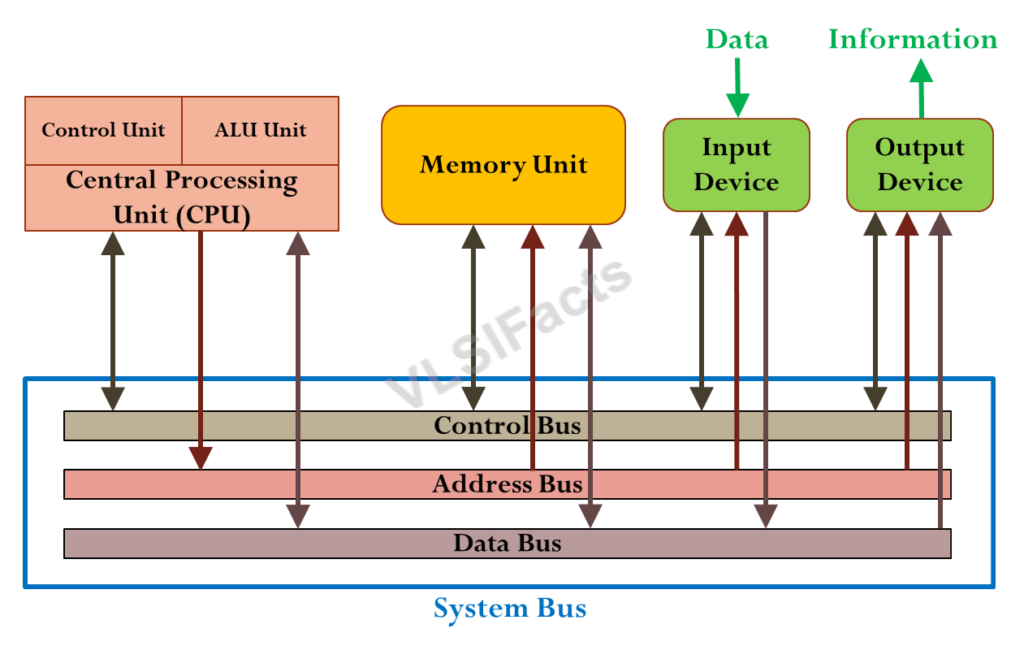The general-purpose digital computer is the best-known example of a digital system. Digital computers have been around since the 1940s, and have been in widespread commercial use since the 1960s. The most striking property of a digital computer is its generality. It can follow a sequence of instructions, called a program, that operates on given data.
Block Diagram of Digital Computer
Central Processing Unit (CPU): The CPU is the principal unit of a digital computer that consists of an Arithmetic and Logic Unit (ALU) and Control Unit. ALU performs different operations on user data. The control unit generates address signals, and other control signals (read, write, etc.).
Memory Unit: Data and Instructions are stored in the Memory Unit. The CPU collects the instructions from the Memory unit that tells the CPU what operation is to be performed on the user data.
Input / Output Device: The user data can be provided to the CPU through the Input device (eg. keyboard), and the generated result can be collected from or displayed on the Output device (eg. monitor).
System Bus: The system bus consists of Data Bus, Address Bus, and the Control Bus. It is the communication infrastructure that establishes the interconnection between the CPU, Memory Unit, and I/O devices.
Previous Table of Content Next